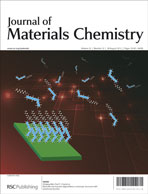Large-scale highly ordered arrays of freestanding magnetic nanowires
Abstract
Template-based techniques using anodic alumina oxide (AAO) templates provide cost-effective processes to fabricate metallic nanostructure arrays for diverse device applications. In this article, we demonstrate an innovative and reproducible fabrication method for realizing highly ordered arrays of freestanding Ni nanowires perpendicular to substrates. Using a multi-step process combining electrochemical perforation, chemical etching and cathodic polarization to the barrier layer of the AAO templates, large-scale (about 775 μm2) and well-aligned Ni nanowire arrays were achieved without wire agglomeration, and the length of the nanowires can reach more than 2 μm. The regularity of the nanowire array has been quantitatively analyzed and the results confirm that the regularity of the AAO template has been completely transferred to the nanowire arrays. Moreover, the structural features of the fabricated Ni nanowires are highly regular and spatially uniform concerning the homogeneous length and the monodisperse diameter; meanwhile both the length and the diameter of the nanowires are tunable. These advantageous features of the freestanding Ni nanowire arrays make them good candidate structures for device applications such as biological sensors and high-density magnetic recording media.


 Please wait while we load your content...
Please wait while we load your content...